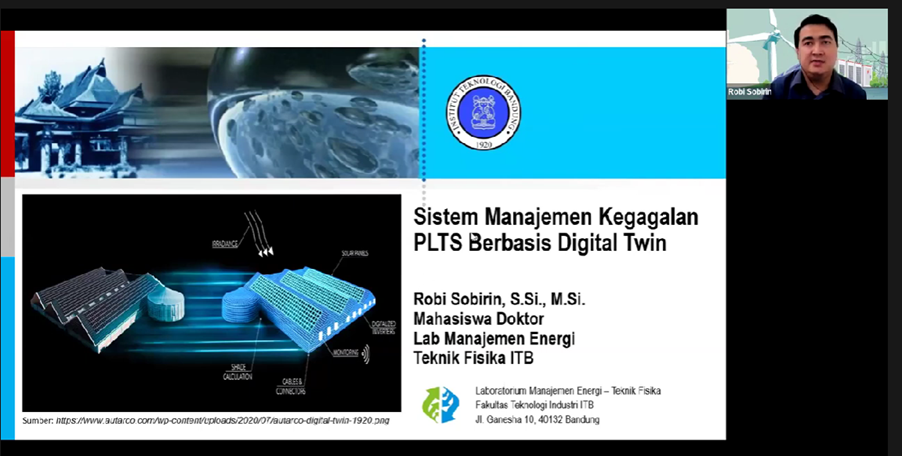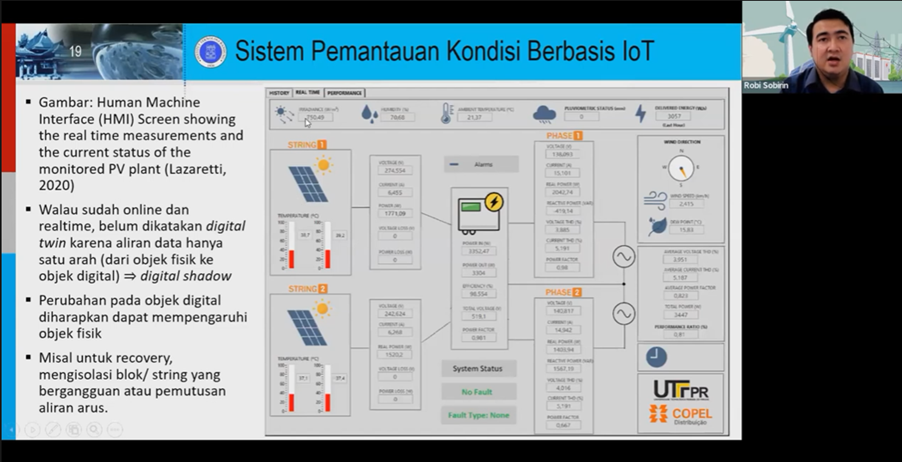Failure Management System for Solar Power Plants Using the Technology of Digital Twin
By Adi Permana
Editor Adi Permana

BANDUNG, itb.ac.id – Solar power plants are one of the well-known innovations that utilize renewable solar energy directly and indirectly, via photovoltage or centralization respectively. Their main development goal in Indonesia is to achieve the national target of 23% (6,5 Gigawatt of solar energy) in 2025. However, their management system can undergo issues that result in declining performance and efficiency.
From the sharing session held by the Engineering Physics Association of the Institution of Engineers Indonesia, Robi Sobirin S.Si., M.Si. from the ITB Engineering Physics Study Program explained one of the solutions to all solar farm failures–the digital twin approach. The doctorate student from the Energy Management Laboratory stated that this technology may be the foundation for all fault diagnoses run on the system.
The digital twin is a virtual model of a work or service procedure, in which it analyzes and monitors the management system to predict the probable troubles faster. “With this technology, the system can solve all issues happening in solar farms.”
There have been several global cases involving conflagrations at solar power plants. For instance, the 400m2 Taipei Water Park in Taiwan which has been operated for 10 years experienced a short circuit due to overheating.
Technical faults in the solar power plant system tend to occur in PV array, DC, and AC sections. The causes that trigger these losses are poor installation, environmental factors, loose interconnection, and aging infrastructure. Impacts from these flaws include a decrease in efficiency, damage to the PV module, and fire hazards.

To identify the breakdowns, a machine learning technology is implemented to perform detection, diagnosis, and prognosis based on both input and output data. Together with the digital twin, the technology can also determine the localization and identification of the causalities.
The first step in monitoring the system failures is creating a scheme for the solar energy conversion system. It is followed by making the general diagram of the PV monitoring system, error detection, and diagnosis techniques.
The digital twin-based error management system in solar power plants can function virtually and remotely via the internet. Moreover, it has a high detection speed and data accuracy to produce digital visualization and allow an automatic two-way data flow.
Reporter: Yoel Enrico Meiliano (Food Engineering, 2020)
Translator: Ruth Nathania (Environmental Engineering, 2019)

.jpg)
.jpg)
.jpg)
.jpg)
.png)

